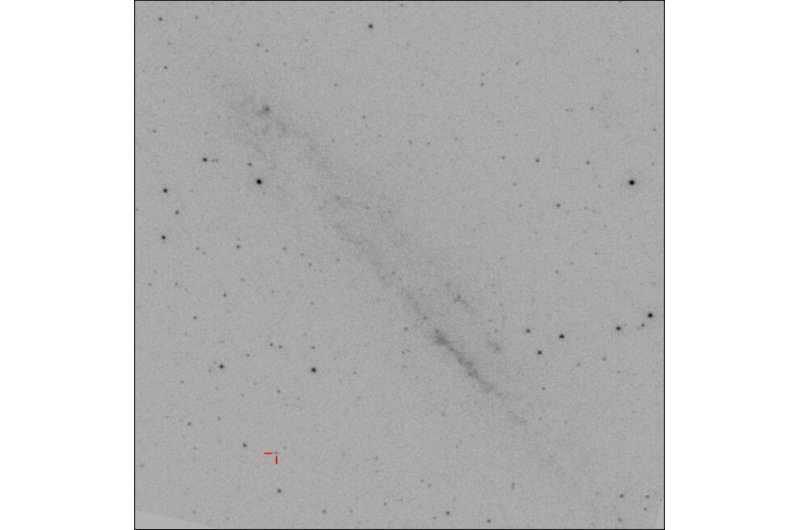June 29, 2022 report
Astronomers detect a new cataclysmic variable system

Using NASA's Swift spacecraft, astronomers have discovered a new cataclysmic variable (CV) through its ultraviolet (UV) bursting activity. The newfound CV, designated TUVO-21acq, was detected as part of the Transient UV Objects Project (TUVO). The finding is reported in a paper published June 21 on arXiv.org.
Cataclysmic variables (CVs) are binary star systems consisting of a white dwarf primary that is accreting matter from a normal star companion. They irregularly increase in brightness by a large factor, then drop back down to a quiescent state. These binaries have been found in many environments, such as the center of the Milky Way galaxy, the solar neighborhood, and within open and globular clusters. In CVs, mass transfer from the companion star often occurs through an accretion disk around the white dwarf and in some cases thermal instability in the disk triggers an outburst known as a dwarf nova (DN).
Now, a team of astronomers led by David Modiano of the University of Amsterdam, the Netherlands, reports the finding of a new CV in the field that targeted the spiral galaxy NGC 4945. The new transient was detected in the UV band, approximately six arcminutes from the center of this galaxy. The discovery was made using data from the Ultraviolet Optical Telescope (UVOT) onboard Swift.
"Within our TUVO project, we have discovered and characterized a new cataclysmic variable in the UV, that we have denoted as TUVO-21acq. The first detection was made in February 2021 using our dedicated pipeline TUVOpipe, which analyzes daily UVOT data to look for transients. A second UV outburst was detected in January 2022," the researchers explained.
The astronomers used UVOT to constrain the properties of TUVO-21acq, focusing mainly on the amplitudes and timescales of the two outbursts. They found that during the first outburst the source increased in brightness by at least 4.1, 2.4, and 3.5 magnitudes and during the second outburst by 4.4, 3.4, and 3.6 magnitudes in three UV bands.
By calculating the time between the first and last detections of each outburst of TUVO-21acq, the researchers determined lower limits for the first and second outburst durations, which were estimated to be 6.1 and 10.7 days, respectively. The upper limits for the first and second outburst were calculated to be 21.1 and 45 days, respectively.
According to the study, key parameters of TUVO-21acq's outbursts derived from UVOT photometry, including the amplitudes, durations, and recurrence time, were found to be fully consistent with dwarf novae. Moreover, the overall shape and key emission features exhibited in the spectrum suggest that the source is a quiescent cataclysmic variable. Therefore, the astronomers classified TUVO-21acq as a DN CV.
"We confirm the nature of the source as an accreting white dwarf which underwent DN outburst based on photometric and spectroscopic properties," the scientists concluded.
They added that their finding demonstrates the capabilities of TUVO in discovering new, previously unclassified transients in the UV wavelength range.
More information: David Modiano et al, TUVO-21acq: a new cataclysmic variable discovered through a UV outburst. arXiv:2206.10395v1 [astro-ph.HE], arxiv.org/abs/2206.10395
© 2022 Science X Network





















